All About the Open Syllable + FREE Anchor Charts
This post may contain affiliate links, and I will earn a commission if you purchase through these links. Please read the disclosure policy for more details.
Next up in my syllable series, I’m going over the open syllable – what is the open syllable and how to teach open syllables using multisensory and Orton-Gillingham methods.
If you are interested in other syllables posts, you can find them here.
Grab your FREE 6 syllable types posters & word lists by subscribing to my list!
*Most school spam filters block my emails, so please use a personal email.

What is an open syllable?
An open syllable is a syllable with a long vowel sound where the vowel is open, meaning there is no consonant after it. See the graphic below for examples of open syllables.

What’s happening in an open syllable is that there is no consonant after the vowel, so the vowel can say its name (the long sound). Remember that in a closed syllable, there is a consonant after the vowel which forces the vowel to make the short sound. In the open syllable, the vowel is free.
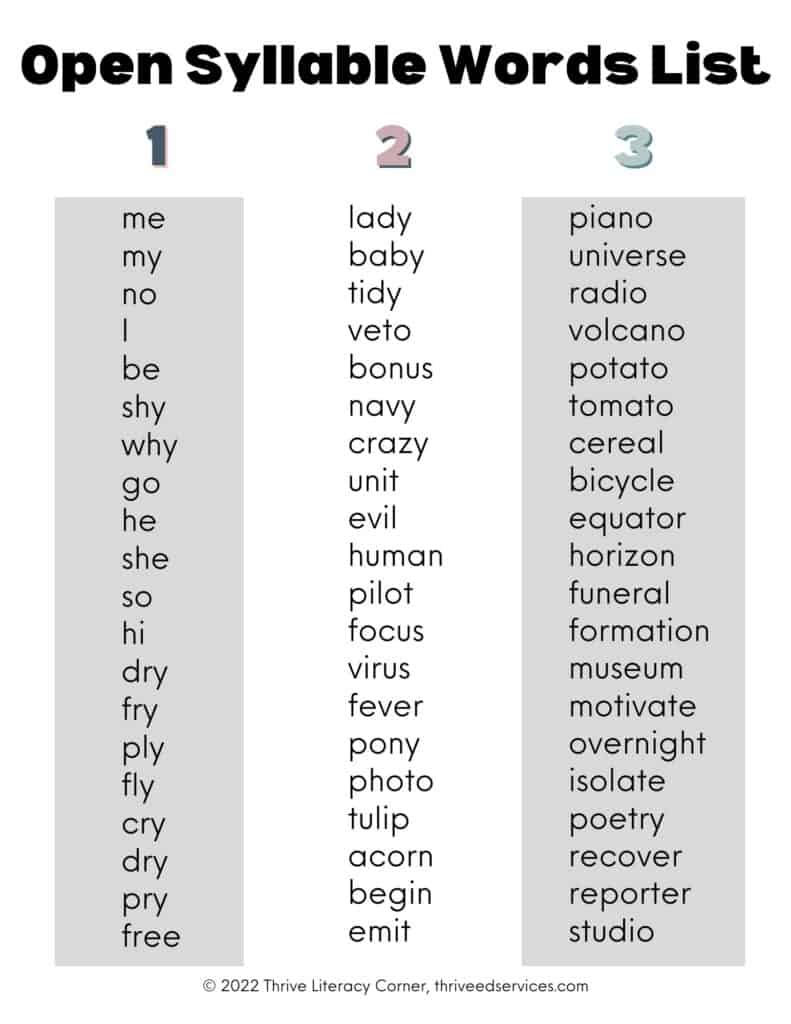
Open syllable words
Open syllables are often found in words with more than one syllable, although there are some one syllable words that are open syllable like a, me, I.
2 Syllable Words
o/pen ca/ter fi/ber be/hind men/u
3 Syllable Words
fe/ver/ish en/a/ble ar/gu/ment ra/di/o

Teaching Open Syllables
It’s very important that you get students into the habit of marking vowels and consonants when learning about syllables. This really helps them see the syllable patterns, especially when you get into multisyllablic words.
To mark an open vowel, I have my students use the macron, the dash right above the vowel (pictured below). This is what you will see in the dictionary so it helps them to learn this symbol. This way when they look up words they don’t know, they can understand how to pronounce them from the dictionary listing.

When should you teach the open syllable?
You should teach open syllables along with or after closed syllables in first or second grade. It’s easy to use CVC words students already know and simply pull away the last consonant to make it open. Also, students will know many open syllable words like me, I, and a.
Procedure for introducing open vowel syllables:
It really helps to use a good open syllables word list. I really like the one in How To Teach Spelling.
1. Start off with using nonsense syllables such as: a, mi, dro, mu, bo, dre, pie, sla, pre, and so on.
Have students mark each long vowel with a macron and read them aloud.
2. Work on words with open syllables such as: cra/zy, du/ty, e/go, bo/nus, po/lo, and so on.
Again, have students mark the open vowels with a macron and read the words aloud.
3. Work on words with both closed and open syllables such as: va/cant, a/pron, be/gan, po/et, ha/ven, bo/nus, and so on.
Have students mark the closed and open syllables with the breve and macron, then they should read the word aloud.
Be sure to use lots of visuals like color coding (red vowel, black consonants for example), letter tiles, phonogram cards, and posters like the one below when practicing.
You can download the Open Syllable Poster (along with the other 5 syllable types) for free by joining my list below.
Grab your FREE 6 syllable types posters & word lists by subscribing to my list!
*Most school spam filters block my emails, so please use a personal email.

Open Syllable Activities
If you’re looking for open syllable worksheets, printables, or activities then there are so many to choose from. Worksheets and printables are abundant in my shop and on Pinterest.
The V-CV Syllable Division Worksheets is a great set with a mix of activities focusing on open syllables.
I strongly recommend using nonsense syllables to work on the open syllable. This is the best way to see if a student truly understands the syllable and fluently decodes.
Other ideas include sorting syllables, playing memory games using open syllable flashcards, and playing games where students have to read open syllables aloud.
Want to remember this? Save All About The Open Syllable to your favorite Pinterest board!



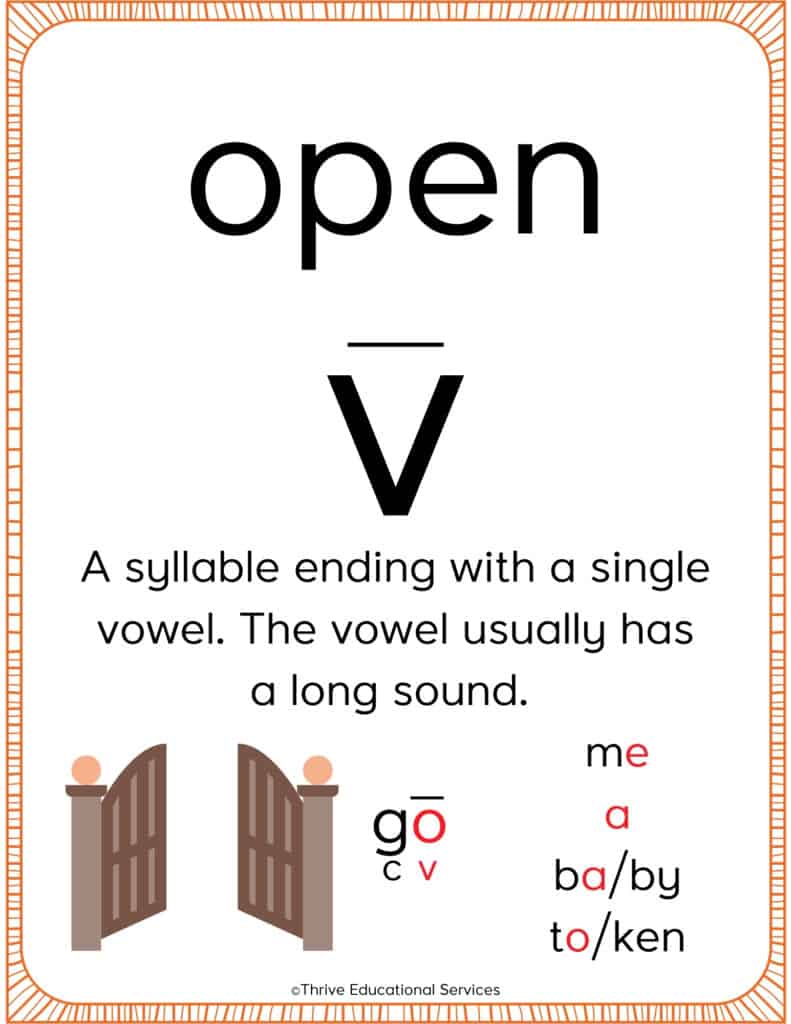



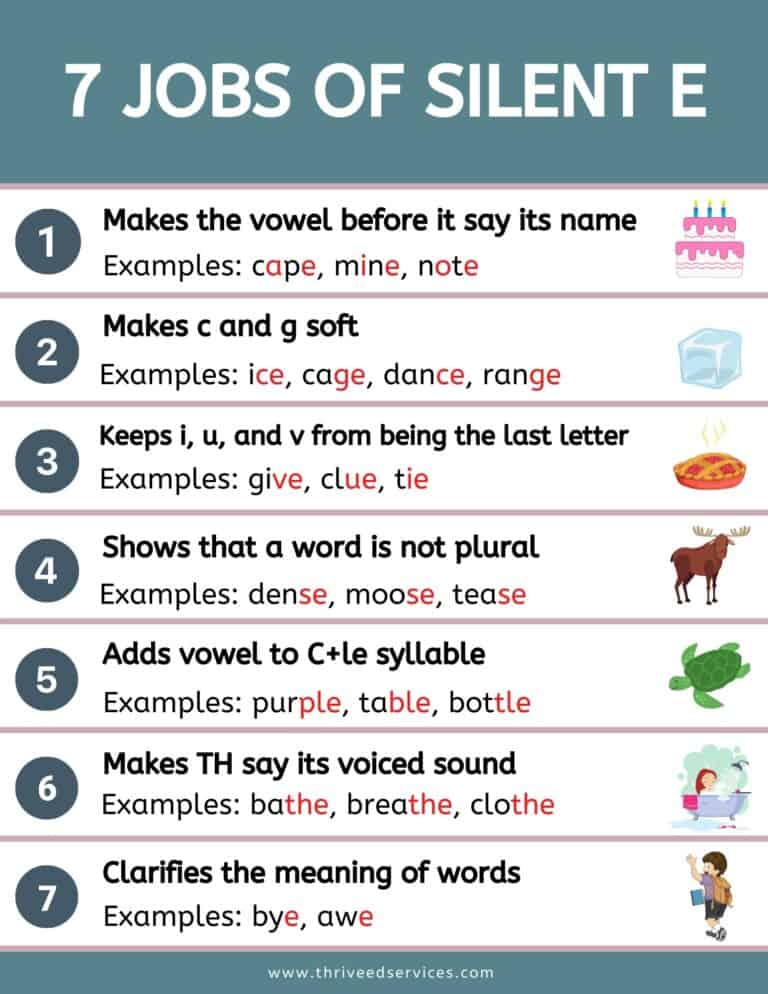
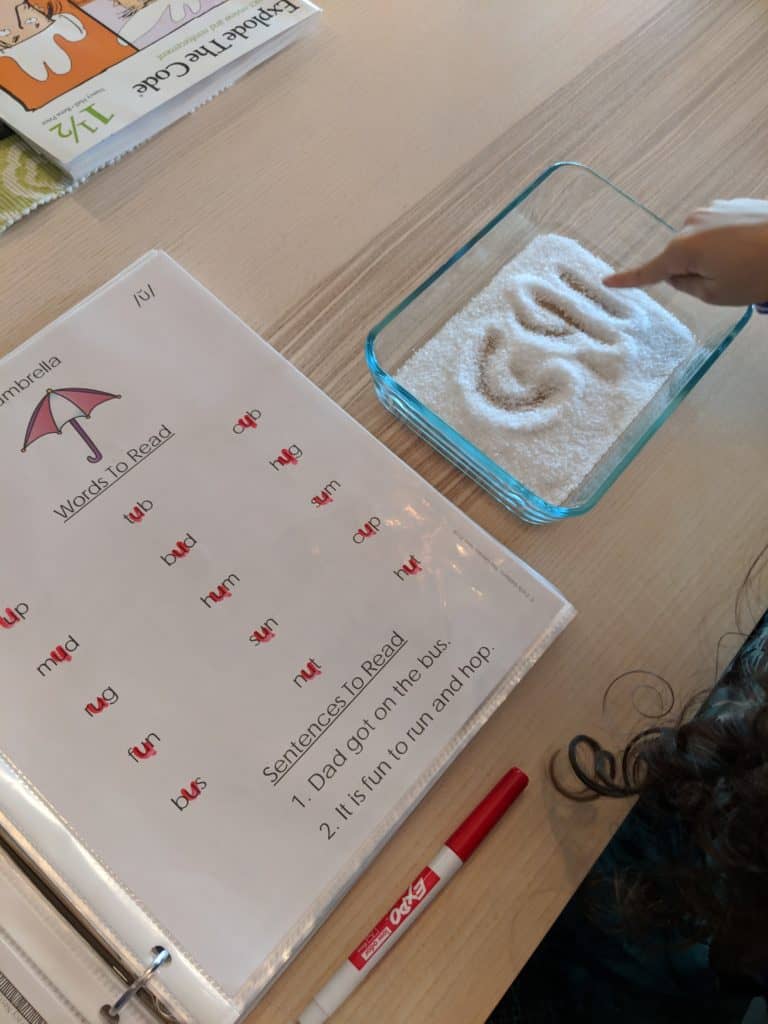
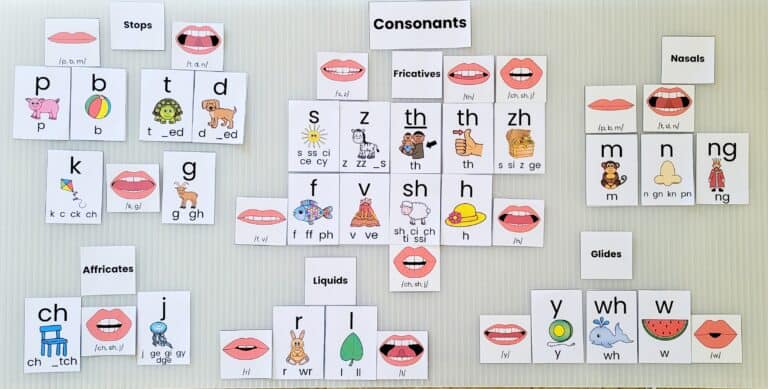
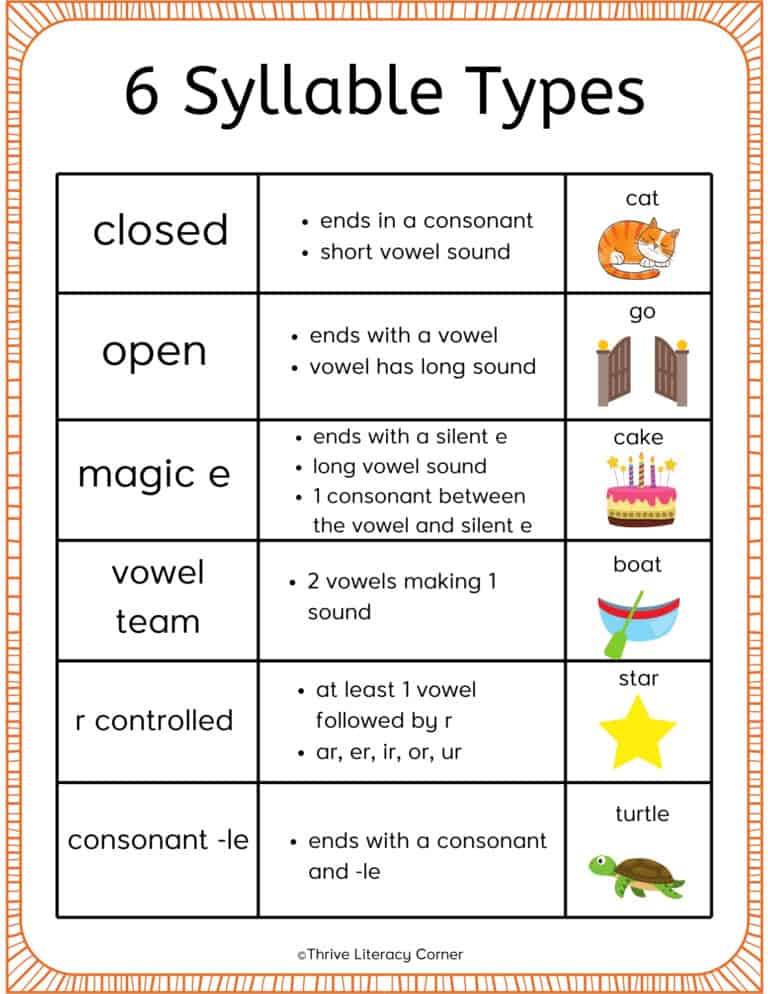
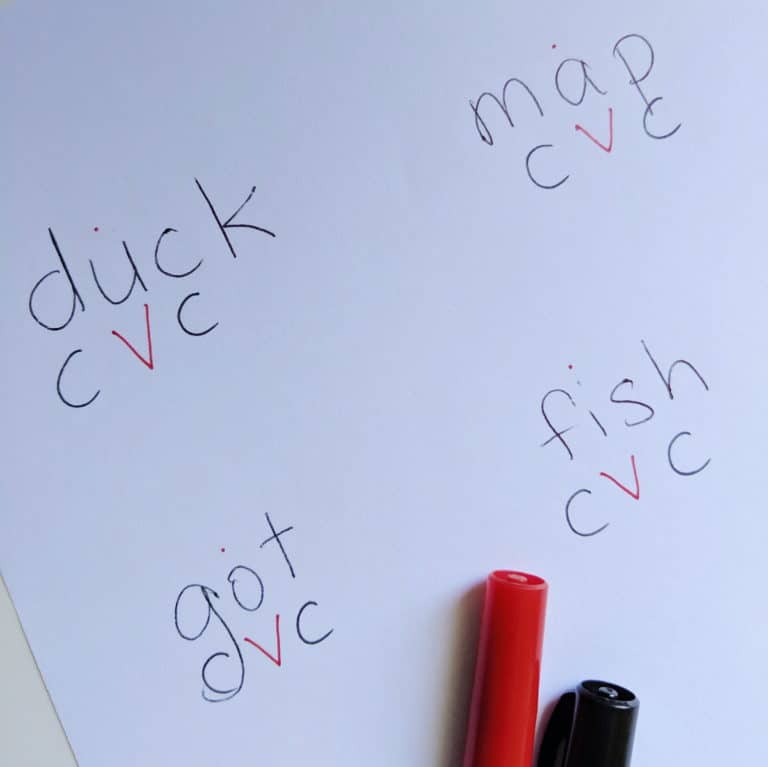
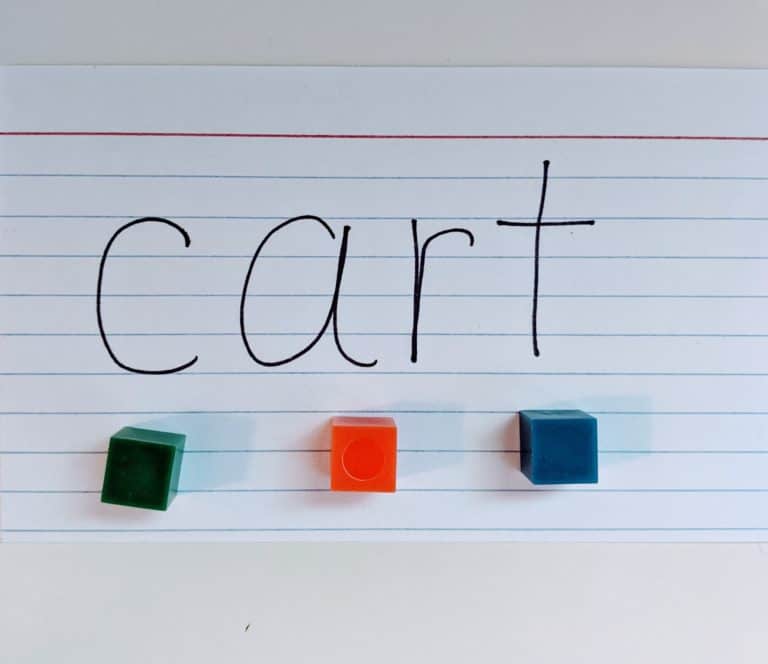
I don`t understand your explanation. Open syllables there is no consonant after the vowel, so the vowel can say its name (the long sound)? How is this possible?
The word Open for example There is an O -vowel and following it is a Consonant P ??? or DUTY
there is a vowel U followed by a consonant T ?
Hi B.J. When referring to syllables being open or closed you have to look at the individual syllable to see if it is open, not the whole word.
So for example, the word open has 2 syllables: o-pen. O is the first syllable, and it ends in a vowel so it is open and that’s why the o says its name. -pen is the second syllable, and it ends in a consonant so that’s why the e makes the short sound.
Duty has 2 syllables: du-ty. Du ends in a vowel so the u says its name, and -ty ends in a vowel so the y makes a long e sound.
Hope this helps!
Can you offer some advice for words such as par/ti/ci/pa/tion? The ti and ci syllables are short i, and I was trying to help my students figure out how to sound out each syllable part today. If there’s a helpful memory device or pattern that I could teach, I’d love to know. Other words that were similar: po/si/tion, con/di/tion. The lesson today was on the suffix -tion. Thanks!
Great question Nicole. Some of those are the schwa sound, like the 3rd syllable in participation and the first syllable in position, which can happen in open syllables. I looked up participation and it is officially split up as par-tic-i-pa-tion, which explains the short i sound in the second syllable. I quickly looked up the etymologies of these words and they all originated from Middle English, French, and Latin which is why their spelling doesn’t necessarily match the pronunciation according to the rules. I always incorporate etymology into my lessons with words like these and students are usually interested in how we borrowed words, and it helps to make sense of their spellings. https://www.etymonline.com/ is a great resource for looking up word histories, and you can see how pronunciation and spelling have changed. Not sure what grade you’re working with but this would not be as helpful for younger students. Hope this helps!
Thanks so much! I’m teaching second grade. Although etymology may be a deep subject for some of my students, I’m sure that it will be helpful for some. I’ll look into when open syllables are schwa sounds, too.